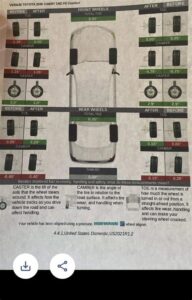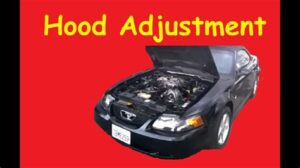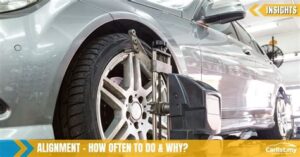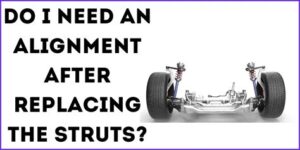Are you a DIY enthusiast looking to enhance your car maintenance skills? Investing in home car alignment tools can revolutionize your approach to vehicle care, saving you both time and money while ensuring your ride runs smoothly. With the right tools at your fingertips, achieving precise wheel alignment in the comfort of your garage is not only feasible but also enjoyable. In this comprehensive guide, we’ll explore the essential tools you need, how to select the best options for your car, and the steps to effectively use them. We’ll also highlight the numerous benefits of regular alignment checks and address common pitfalls to avoid. Whether you’re a seasoned pro or just starting, our insights will ensure you’re well-equipped to maintain your vehicle’s performance and safety. Let’s dive into the world of home car alignment tools!
Essential Home Car Alignment Tools for DIY Enthusiasts
For anyone looking to perform home car alignments, having the right tools is essential. Below is a list of the basic tools that every DIY enthusiast should consider for effective alignment:
| Tool | Description |
|---|---|
| Tape Measure | Used for measuring the distance between the front and rear wheels to ensure equal spacing. |
| Camber Gauge | A tool that measures the camber angle of the wheels, allowing adjustments to be made as needed. |
| Alignment Kit | Typically includes crossbar and adjustable rods to measure wheel angles accurately. |
| Laser Alignment Tool | Projects a laser line to help with precise alignment measurements. |
| Jack and Jack Stands | Required for lifting the vehicle to access the wheels safely. |
| Wrenches and Socket Set | Needed for making adjustments to the suspension components. |
| Plumb Bob | A simple yet effective tool for checking perpendicularity during the alignment process. |
By ensuring you have these essential tools, you can save time and money on home car alignments and maintain your vehicle’s performance effectively.
How to Choose the Right Tools for Home Car Alignment
Choosing the right tools for home car alignment is crucial for achieving precise results without the need for professional assistance. Below are several factors to consider when selecting your alignment tools:
Investing time in selecting the right tools for your home car alignment procedure will lead to better outcomes and enhance your overall experience. With the proper equipment, you can maintain your vehicle’s handling and tire longevity effectively.
Steps to Effectively Use Home Car Alignment Tools
Ensuring your home car is properly aligned is essential for optimal performance and tire longevity. To effectively utilize your home car alignment tools, follow these systematic steps:
- Gather Your Tools: Before starting, make sure you have all necessary tools ready, including a level, a measuring tape, and camber gauges.
- Prepare Your Workspace: Park your home car on a flat, level surface. This will ensure accurate measurements throughout the alignment process.
- Check Tire Pressure: Inspect all tires to confirm they are inflated to the manufacturer’s recommended pressure. Incorrect tire pressure can affect alignment readings.
- Inspect Suspension Components: Before alignment, check for any wear or damage to suspension parts, such as bushings and ball joints. Repair or replace any damaged components before continuing.
- Measure Initial Alignment: Using your measuring tape and level, measure the current alignment settings of the front and rear wheels. Take note of any discrepancies in camber, caster, and toe angles.
- Adjust Alignment: Use your alignment tools to make necessary adjustments. Typically, this may involve turning adjustable tie rods, camber bolts, or utilizing shims.
- Re-measure After Adjustments: After making adjustments, re-measure the alignment settings to ensure they are within the specified ranges for your vehicle.
- Test Drive: Once adjustments are complete, take a short test drive to feel how your home car handles. Watch for any signs of misalignment, such as pulling to one side.
- Final Check: After the test drive, double-check alignment settings to confirm that everything is in order before concluding the process.
Following these steps will help ensure your home car is aligned properly, promoting better handling, tire wear, and overall vehicle safety.
Benefits of Using Home Car Alignment Tools Regularly
Using home car alignment tools regularly offers several benefits that can enhance both the performance and the longevity of your vehicle. Below are some key advantages:
| Benefit | Description |
|---|---|
| Improved Tire Life | Regular alignment checks can help even tire wear, increasing their lifespan and saving you money on replacements. |
| Enhanced Fuel Efficiency | Proper alignment reduces rolling resistance, which may lead to better fuel economy. |
| Smoother Ride | Correct alignment ensures that your car handles and rides smoothly, improving comfort for you and your passengers. |
| Better Handling | A well-aligned car is easier to control, making for a safer driving experience. |
| Preventative Maintenance | Regular use of home car alignment tools can help you identify other issues early, preventing costly repairs down the road. |
Incorporating the use of these tools into your regular maintenance routine can significantly contribute to the overall health and performance of your vehicle. By being proactive about alignment, you not only enhance your driving experience but also invest in the long-term durability of your car.
Common Mistakes to Avoid When Aligning Your Home Car
Aligning your vehicle at home can be a rewarding experience, but there are common mistakes that many DIY enthusiasts encounter. Being aware of these pitfalls can help ensure that your home car alignment is done correctly and efficiently.
- Not Leveling the Vehicle: One of the most crucial steps is ensuring that your home car is on a level surface. Failing to do this can lead to inaccurate measurements, affecting alignment results.
- Ignoring the Manual: Different vehicles have specific alignment requirements. Ignoring the manufacturer’s guidelines can lead to imprecise adjustments, impacting performance and tire longevity.
- Improper Tool Use: Each alignment tool has its specific purpose. Misusing these tools or using the wrong ones can lead to poor alignment results. Always familiarize yourself with the tools beforehand.
- Neglecting Tire Condition: Before beginning the alignment process, check the condition of your tires. Worn or uneven tires can skew the results, and addressing tire issues prior to alignment is essential.
- Skipping Test Drives: After making adjustments, it’s crucial to take your home car for a test drive. This helps ensure everything feels right and that there are no lingering issues with alignment.
- Overlooking Regular Checks: Alignment isn’t a one-time job. Regularly checking your alignment can help catch issues early, prolong tire life, and improve handling.
By avoiding these common mistakes, you can ensure that your home car alignment process is smooth and effective. This will not only enhance your vehicle’s performance but also lead to safer driving experiences.
Frequently Asked Questions
What are home car alignment tools?
Home car alignment tools are devices designed for vehicle owners to check and adjust their car’s alignment at home for better tire wear and handling.
Why is car alignment important?
Car alignment is crucial for ensuring that your vehicle drives straight, enhances fuel efficiency, and prevents uneven tire wear.
What tools do I need for home car alignment?
Common tools include alignment gauges, toe plates, camber gauges, and a level, along with a proper jack and jack stands for lifting the vehicle safely.
Can I do a car alignment myself?
Yes, you can perform a basic car alignment yourself using the right tools, although it may not be as precise as a professional alignment.
How often should I check my car’s alignment?
It’s recommended to check your car’s alignment at least once a year, or more frequently if you notice uneven tire wear or if your car pulls to one side.
What signs indicate that my car needs alignment?
Signs that indicate a need for alignment include uneven tire wear, the vehicle pulling to one side, and a steering wheel that’s off-center.
Are there any professional services I should consider instead of doing it at home?
If you’re uncertain about the process or lack the necessary tools, considering a professional alignment service can provide more accuracy and confidence in your vehicle’s handling.





